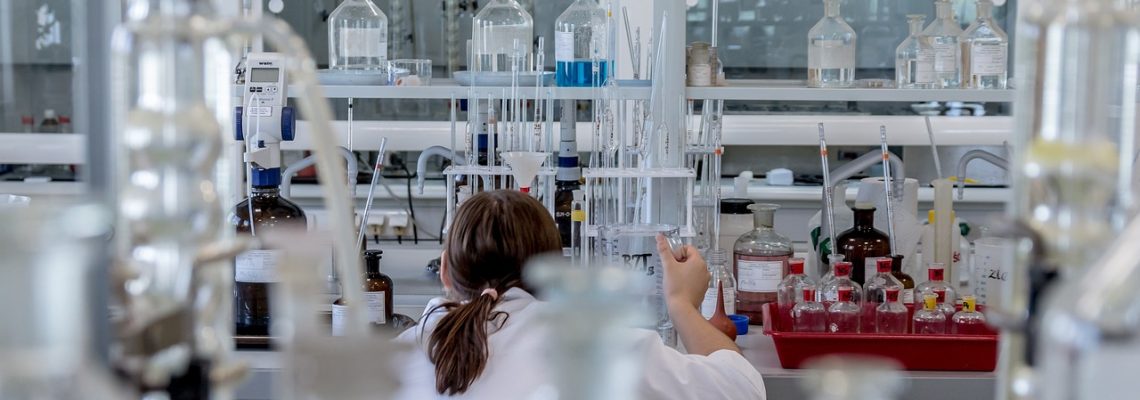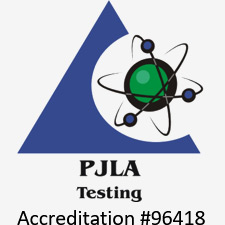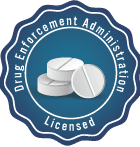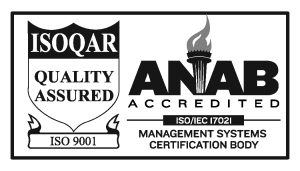Safety is a core tenet of medical devices. Their biocompatability, in many ways, supercedes their application efficacy. It doesn’t matter how well a stent opens a narrowed blood vessel if its polymer constituents are hazardous to health. Robust chemical analysis allows manufacturers to screen known chemicals in the device, demonstrating chemical safety and biocompatability at the earliest possible outset. But such targeted approaches may fall short.
Non-targeted analysis casts a wider net, identifying unexpected compounds that might be hazardous. This comprehensive approach makes NTA essential for evaluating the complete chemical makeup of medical devices, safeguarding human health.
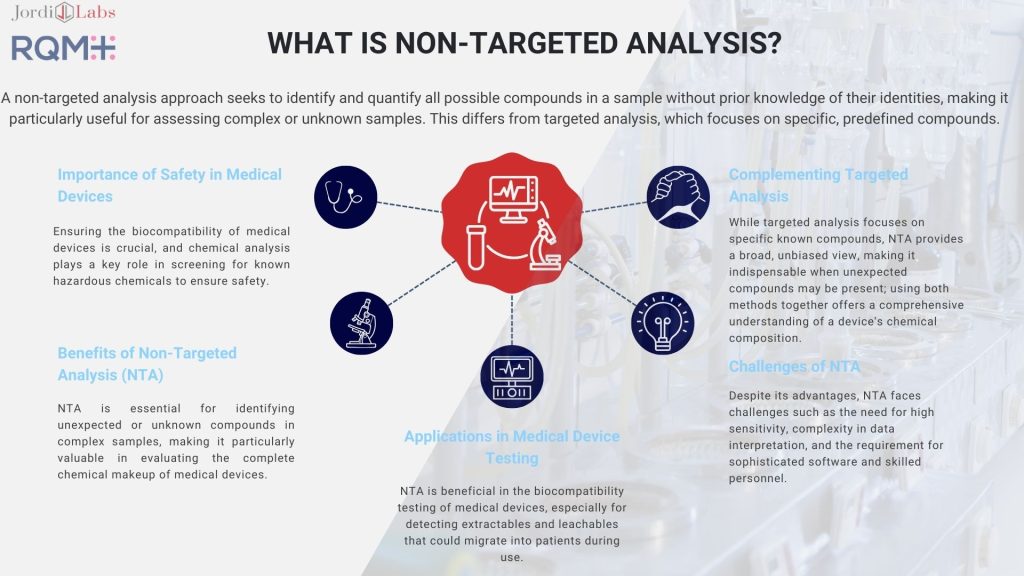
Understanding Non-Targeted Analysis
A non-targeted analysis approach to chemical characterization aims to identify and quantify as many compounds as possible within a sample without prior knowledge of what those compounds might be. This contrasts with targeted analysis, where specific compounds are identified and quantified based on predefined criteria or hypotheses. In other words, non-targeted analysis does not have a set list of analytes that are sought after. Therefore, it is especially valuable in assessing complex or unknown samples.
The Role of Non-Targeted Analysis in Chemical Characterization
Non-targeted analysis is particularly beneficial in scenarios where the chemical composition is complex or unknown. Such scenarios are common in environmental studies, food safety, and, crucially, in the biocompatibility testing of medical devices. This approach is especially relevant when dealing with extractables and leachables. These are compounds that can migrate from device materials into patients during use.
The methodology often involves advanced analytical techniques like mass spectrometry (MS) and chromatography. These techniques allow for the separation and identification of a wide range of compounds. This is based on their mass-to-charge ratios and retention times. By employing non-targeted analysis, scientists can construct a comprehensive chemical profile of device materials, ensuring no potentially harmful compounds go unnoticed.
Challenges and Considerations in Non-Targeted Analysis
Despite its advantages, non-targeted analysis presents several challenges. The primary hurdle is the need for high sensitivity and specificity, enabling the detection of compounds at trace levels. Additionally, the complexity of data interpretation increases due to the large amount of information generated. To manage these challenges, confidence levels are often assigned to each identification, ensuring transparency and reliability in the analysis process.
Furthermore, non-targeted analysis requires sophisticated software and databases to manage and interpret the vast amounts of data generated. The need for such resources highlights the importance of having skilled personnel to perform these analyses and interpret the results accurately.
Applications in Medical Device Risk Assessment
In the context of medical devices, non-targeted analysis is crucial for risk assessment and regulatory compliance. Standards such as ISO 10993-18 provide guidelines for the chemical characterization of device materials, including both extractables and leachables. By employing non-targeted analysis, manufacturers can ensure comprehensive identification of all chemical substances present in their devices, mitigating potential risks to patients.
Real-World Applications
In real-world scenarios, non-targeted analysis is employed in the development of various medical devices, including surgical tools. By identifying all compounds, including unexpected or unknown substances, manufacturers can make informed decisions about the safety and compatibility of their products. This approach not only ensures regulatory compliance but also enhances patient safety through minimizing the risk of adverse reactions.
Comparing Non-Targeted and Targeted Analysis
Non-targeted analysis offers a broad and unbiased view of the chemical composition of device materials. On the other hand, targeted analysis focuses on specific known compounds. Targeted analysis is often used when there is a clear hypothesis or concern about specific substances. It offers higher sensitivity for those specific compounds. This can be beneficial when the exact quantification of known substances is required.
However, the flexibility and comprehensive nature of non-targeted analysis make it indispensable in situations where unknown or unexpected compounds may be present. By using both approaches in tandem, manufacturers can achieve a thorough understanding of their device’s chemical makeup.
Undertake Chemical Characterization With The Support of Non-Targeted Analysis
Non-targeted analysis represents a powerful approach to the chemical characterization of medical devices. Its ability to uncover a wide range of compounds makes it invaluable for ensuring the safety of device materials. While challenges exist, advances in analytical technologies continue to enhance the capabilities of non-targeted analysis, making it an essential tool in the modern regulatory landscape. By integrating non-targeted analysis into their risk assessment processes, manufacturers can uphold the highest standards of safety and compliance, ultimately protecting patients and advancing healthcare innovation.If you need help with chemical characterization, we, Jordi Labs, an RQM+ company, would recommend getting in contact with us about our laboratory services. For those that produce medical devices, these services include failure investigations and deformulation testing. We also provide more information on our blog about chemical characterization and medical devices, as well as other topics ranging from product deformulation to protein purity and thermal gravimetric analysis. Utilize our lab services and robust knowledge of chemical characterization to strengthen the potential of your medical devices

